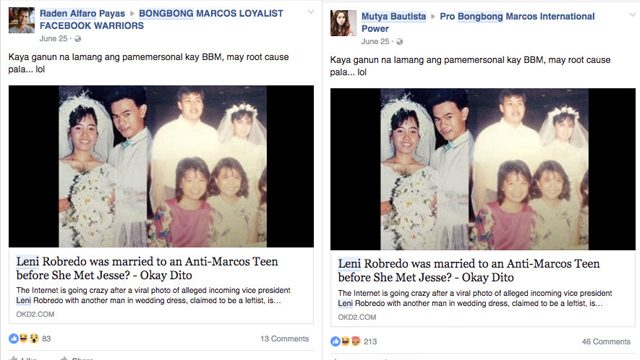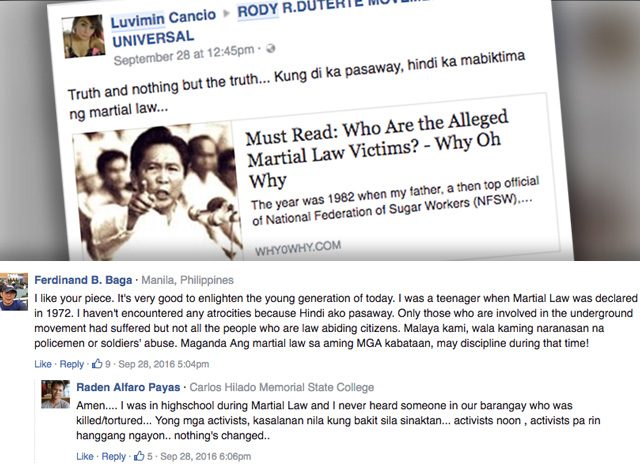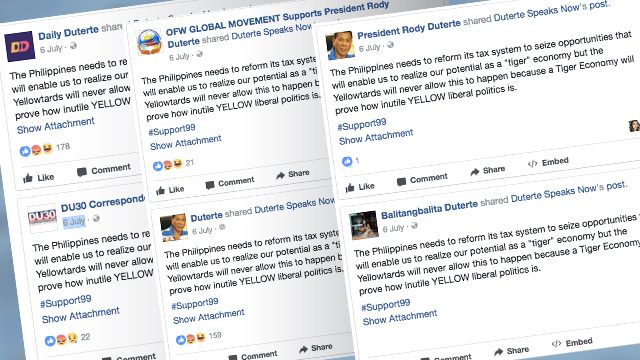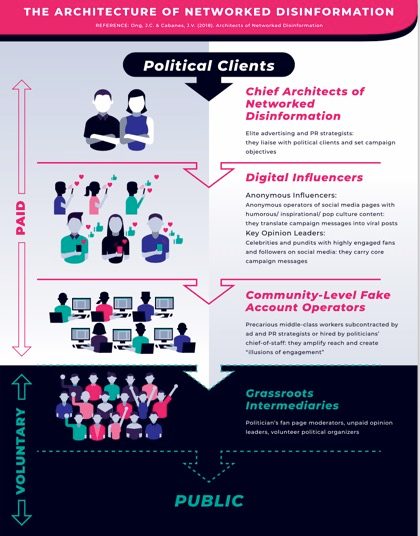SUMMARY
This is AI generated summarization, which may have errors. For context, always refer to the full article.

MANILA, Philippines – Because Filipinos have been drowning in a sea of fake accounts, propaganda, and disinformation in the last 3 years, a United States probe linking the Russians to these techniques raises the question of whether local propagandists and PR practitioners received similar advice from kindred spirits in the Kremlin. Or were they just a step ahead of the game?
In indicting the Russians last February, US special counsel Robert Mueller said their massive online attacks were meant to mobilize support for then presidential candidate Donald Trump and “sow discord in the U.S. political system, including the 2016 U.S. presidential election.”
The Russians continued to deploy the same strategies – like the use of sock puppets, fake news, and the creation of targeted and hateful content – even after Trump got elected, with the strategic goal to divide Americans.
These have been in place in the Philippines since 2015 as well.
Why does this matter? Russia, a veteran in information warfare, employs this strategy to weaken the social cohesion and political systems of other countries.
The use of the same techniques in the Philippines achieves the same purpose of widening and complicating social divisions, sowing hate, influencing political processes, and exacerbating deep-seated tensions arising from unresolved conflicts in the last 4 decades.
In the last 3 years, we’ve seen how Filipino public relations (PR) practitioners and agencies, as well as political strategists, state propagandists, and their anonymous satellites use them. (READ: Chief disinformation architects in the PH: Not exactly who you think)
On the surface, these serve to promote their clients and the programs they carry. But more insidious are the negative consequences of these tactics on how we think and act as citizens.
What are these Russian techniques, as spelled out in the Mueller indictment, and how have they been used and seen in the Philippines? (READ: Full text of Mueller’s Russia-Trump indictment)
1. ‘Fictitious online personas’ or fake accounts
What the indictment says:
“By 2016, Defendants [Russians] and their co-conspirators used their fictitious online personas to interfere with the 2016 U.S. presidential election. They engaged in operations primarily intended to communicate derogatory information about Hillary Clinton, to denigrate other candidates such as Ted Cruz and Marco Rubio, and to support Bernie Sanders and then-candidate Donald Trump.”
How we’ve seen it in the Philippines:
In the last quarter of 2015, as candidates geared up for the campaign, fake accounts proliferated on Facebook and were used to bring down some candidates and promote others.
John Victorino, an investment analyst who monitored a nest of online accounts for months, spotted some noticeable patterns in what he described as suspicious accounts.
Victorino said some of the accounts he watched closely were created in the last quarter of 2015, in the lead-up to the May 2016 elections. Those who were part of this nest shared common practices such as similar “liked” pages, a small number of friends, and profile and cover photos that were not theirs.
In June 2016, a month after Bongbong Marcos lost a tight vice presidential race to Leni Robredo, one post by fake account “Mutya Bautista” shared a post with the group Pro BongBong Marcos International Power. The post maligned and spread fake news about Robredo, whom he accused of cheating. This was later shared to another Marcos group by a real account who thought Bautista’s post was true, further amplifying the disinformation.
Another fake account, “Luvimin Cancio”, shared with Facebook group Rody R. Duterte Movement Universal a blog that disputes accounts of victims of Ferdinand Marcos’ martial law regime. The blog said the people who complain about Martial Law atrocitities were either activists, labor leaders, or those against then president Ferdinand Marcos, and were “nothing but self-centered and attention hungry.”

The younger Marcos is an ally of Duterte. Like in the US elections, these fake accounts cited by Victorino supported Marcos and maligned Robredo.
2. Creation of propaganda pages
What the indictment says:
“Defendants, posing as U.S. persons and creating false U.S. personas, operated social media pages and groups designed to attract U.S. audiences. These groups and pages, which addressed divisive U.S. political and social issues, falsely claimed to be controlled by U.S. activists when, in fact, they were controlled by Defendants.”
In the Philippines
In September 2016, du30newsinfo.com was observed to have at least 13 agents or spammers who posted over 4,000 posts in more than 40 groups. An account is classified as an agent or spammer if it had posted more than 100 items in groups in a single month from a single website or page alone. (READ: Fake accounts, manufactured reality on social media)
The 4,000 posts resulted in a cumulative 170,000-plus shares. This means that one post alone generated an average of over 40 shares. At least 5 of these posts received more than 1,000 shares. This is how one post can go viral very quickly.
Aside from that, newsph.info, with only 5 agents generated over 50,000 shares from only 1,300 posts during the same period. Similarly, nowreader.com generated 39,000 shares from over 1,100 posts of only 3 agents. In the same month, the site whose content is regularly shared by the troll Luvimin Cancio, OKD2.com, got 11,900 shares from only 716 posts.
From August 1 to September 20, 2016, some accounts were observed to be sharing the same links more than 7 times on average with different groups. Rappler’s tally showed that each of the top 10 “spammers” who mentioned Senator Leila de Lima, a favorite back then, posted at least 200 messages during that period.
All pages were allied and identified with President Rodrigo Duterte, who won in the May 2016 elections.
3. Use of social media platforms to spread derogatory information
What the indictment says:
“Defendants posted derogatory information about a number of candidates, and by early to mid-2016, Defendants’ operations included supporting the presidential campaign of then candidate Donald J. Trump (“Trump Campaign”) and disparaging Hillary Clinton.”
It also said that the project targeting the US population “conducted operations on social media platforms such as YouTube, Facebook, Instagram, and Twitter.”
How we’ve seen it in the Philippines:
On July 5, 2017 a group called Thinking Minds posted a video on YouTube entitled: “Shameful Yellowtard strategy: Starve the country of cash by OPPOSING TAX REFORM.” It was the same day the government hosted its tax reform forum to galvanize support for the bill.
The message of the video was simple: if you don’t support tax reform, then you support the opposition. It also alleged that the reason the Liberal Party opposed tax reform was because of a destabilization plot to oust Duterte.
The video does not show facts or evidence to prove its allegations.
Similar to what happened in ths US, the same video on YouTube was also shared on another social media platform. It was shared by Daily Duterte Facebook page to its over 300,000 followers.
At least 6 other pro-Duterte groups shared the video as well on the exact same date, with the exact same post as the Daily Duterte page. Other pages that shared it include DU30 Correspondents, Duterte Speaks Now, Balitangbalita Duterte, OFW Global Movement for Duterte, Duterte, and President Rody Duterte.

This same strategy of automated or mass posting was observed in the Russian interference of the Catalan referendum.
4. Hierarchical, strategic operations
What the indictment says:
“The ORGANIZATION employed hundreds of individuals for its online operations, ranging from creators of fictitious personas to technical and administrative support. The ORGANIZATION’s annual budget totalled the equivalent of millions of U.S. dollars.”
How we’ve seen it in the Philippines:
In a 12-month project conducted by researchers in the University of Massachusetts, University of Leeds and De La Salle University Philippines, researchers found this same strategy was used by leaders in the ad and PR industry, to spread propaganda.

The report, “Architects of Networked Disinformation: Behind the Scenes of Troll Accounts and Fake News Production in the Philippines” found that disinformation production in the country is a hierarchical organization that is strategic and exploitative – like the Russian organization indicted in the U.S.
These hierarchies – which included PR heads as strategists for politcal clients, anonymous digital influencers who create viral content to amplify core communication messages, and fake account operators to mimic engagement – were used to seed divisive memes and revisionist history narratives in the lead-up to the 2016 Philippine elections and up to this day.
What other questions remain? Aside from PR and advertising agencies and political parties, who else are behind the same sort of information warfare we see in the Philippine online space? Who are funding these operations in the Philippines? How actively are the same tactics already being deployed for the 2019 senatorial and local elections?
What can be done? While complex operations are not always easy to detect, experts have advised netizens to take basic steps to unmask these activities. These include taking the initiative to call out platforms such as Facebook, Twitter, and YouTube; staying vigilant and critical as they read and share posts from their feeds; and seeking information, not just affirmation of existing biases. – Rappler.com
Cover photo by Raffy De Guzman
Add a comment
How does this make you feel?
There are no comments yet. Add your comment to start the conversation.